Fintech
How Current beat the fintech winter and achieved 100% growth with Current’s Stuart Sopp
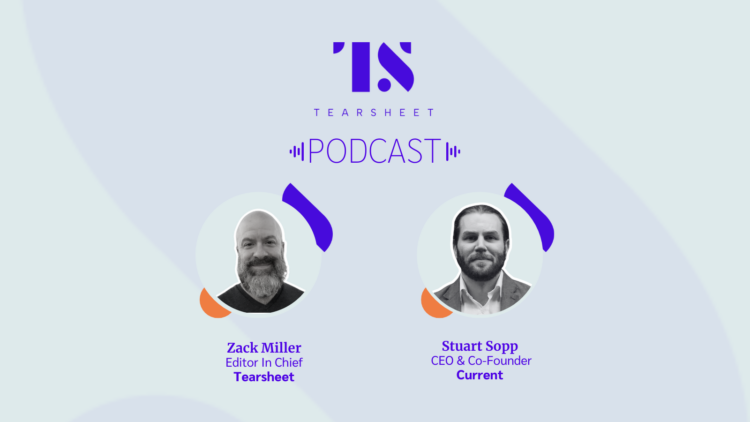
At Tearsheet, we’ve been following the growth and maturity of neobanks over the past few years and all in, with the billions of dollars invested, products launched and customers acquired, the path to good unit economics has been elusive for some.
Joining me on this podcast today is Stuart Sopp, CEO and co-founder of Current. In this episode, Stuart gives a behind-the-scenes look at how Current has managed to thrive throughout the fintech winter by adjusting the dial on its marketing spend without compromising its growth. Stuart also delivers a masterclass in product development and finding the right product-market fit for digital financial products.
Sopp dives into Current’s development pipeline and the go-to-market strategy behind its new Earned Wage Access product and credit builder card, as well as what he’s seeing in demand for these new products.
It’s a conversation about what it takes to build a neobank that doesn’t only survive, but thrive.
Listen to episode
Subscribe: Apple Podcasts I SoundCloud I Spotify I Google Podcasts
Watch the episode
The big ideas
- Finding the best deal for customers and company: Banks have really given consumers a terrible deal. There’s a lot of fixed fees, like overdraft fees, that everyone’s very familiar with. When people switch to Current, it’s a rare triple win in the sense that as we acquire customers from banks, these customers get stronger on unit economics, we get stronger, because we can do it profitably, and then the customers get a great deal.
- An eye on the market and an eye on the product: There are multiple banks coming out, saying regulation changes are coming, and we’re going to have to charge monthly account fees, and we can’t do this properly. Current has spent the best part of nine years building for this moment where we knew these headwinds for everyone else would come in and we have strategically positioned ourselves in a very advantageous position.
- Playing the long game: The way to look at Current is it’s a longer term play. But the market being a long term weighing machine, I think we win over time. We’re starting to see that product moat really come through for Current this year.
- Bigger isn’t always better when it comes to marketing: We did use influencers like MrBeast years ago. I would suggest large multinational corporations would probably be best suited for the largest YouTube influencers now because of their global reach for a 13 to 30 year old. We’ve naturally stayed focused on the U.S. market, so that’s why it’s very hard for us to maintain effective CPMs using generalist influencers.
- The future of Earned Wage Access: Some states are saying we don’t like EWA, and we don’t want to do it. And that’s fine. We will not have active users in those states. But I think what is happening, and what will happen over the next three to five years, is very similar to lending licenses state by state. It’s just going to be only lending licenses for people 620 and above, and EWA licensing 600 and below.
The tides of change at Current
We’ve seen a lot of change. More specifically, since the middle of 2023. What we did, as the interest rate market came undone and the cost of money went up for everyone right across the world, we really dialed back on our marketing and extended our runway to deliver two new products that we thought at the time, and now we can confirm, are working synergistically together. And that’s really built upon our proprietary technology stack that many listeners will probably be familiar with by now.
The first one is the Build Card, which is a secured charge card. That works in a really interesting way, and I’ll go into that in a second.
And then two, we launched an Earned Wage Access product that works well with the rest of the value and products that we’ve launched and built on Current over time. We launched that internally in October last year, and then started leaning in marketing, basically at the beginning of this year. So those are the two big changes. Those were sort of strategic changes for us. Our customers are sub 620 FICO customers, deep subprime. Many of them are not in the business model of banking — they didn’t really fit it very well, because even in aggregate, they don’t have a ton of deposits together.
So banks have really given them a terrible deal. There’s a lot of fixed fees, overdraft fees, which everyone is very familiar with. It’s a rare triple win in the sense that as we acquire customers from banks, these customers get stronger on unit economics, we get stronger, because we can do it profitably. And then the customers get a great deal. They get liquidity, they get credit building, they get all this other stuff. But the banks are really unable and unwilling to deliver to this type of customer.
Current’s new products
The Build card is a secured charge card. It’s unique to Current in the sense that it has one balance and one ledger. You can imagine the competitors using I2C or Galileo, those in-between processors that link to the networks. Of course, then they maybe have multiple issuing banks, which has its own problem. We could probably spend a lot of time talking about that, too. It’s very topical now. So you can imagine having a debit credit card, these multiple ledgers, multiple issuing banks, different rules and regulations between them all — it is very hard to get a really good attach rate and a really succinct, nice, and simplified experience for pretty much everyone else.
So using our own ledger and our own core, we were able to build this unique experience which allows you to build credit with every swipe.* And you collateralize the account with as little as $1.
Obviously, we prefer that you move your paycheck over because a lot of liquidity then gets unlocked with that. But the Build card builds credit for our members. We’re looking at 10 to 20 points [credit score improvement] within the first month or two. And so it’s a great product for the customers because the debit and their secured charge card are deprecating one balance. There’s no moving money around, or anything like that. We’ve taken all that complexity on the infrastructure and the product side, and really just simplified it and rendered it to like “Hey, open a Current account and you get these two cards: one virtual, then one physical.” Then members have one balance on Current that gives them access to the same benefits with the opportunity now to build their credit with every swipe.*
So that’s a market leading product. Customers who have a sub 620 FICO score, one of their main problems is their credit score. And they know that access to liquidity or credit is being hampered by either thin file, no file, or some form of events. So banks aren’t able to service them. This is an amazing product for them to really fall back into and start getting that good behavior going. So then building that credit score, it benefits the company for us, because we’re moving a lot of our spend from a debit to credit, which obviously has higher interchange. It has different dynamics in terms of disputes and chargebacks, and things like that as well. So there’s a different dynamic, and there’s a different regulation set for credit. But the way we have built the infrastructure and the product experiences, we’ve managed to mitigate and help some of those product experiences for the customer. So what that really does at the top of the funnel is enable us to have 100% eligible, no fee, no APR, no funny business low charge off, secured charge card that allows our members to build credit with every swipe.*
That’s a different product of what’s out in the market to even neobank competitors, but also, more importantly, to some of our bank competitors, because they have a very narrow credit box. They’re trying to get the graduation of high charge offs. It’s not a profitable product, it’s very hard to deploy in marketing. It’s just obviously tough for the banks to compete with this product. As you’ve seen in the press, there are multiple banks coming out, saying regulation changes are coming, and we’re going to have to charge monthly account fees, and we can’t do this properly.
Well, Current has spent the best part of eight or nine years building for this moment where we knew these headwinds for everyone else would come in. We have strategically positioned ourselves in a very advantageous position from a company standpoint, but more importantly, from a customer standpoint, as the best option. So we launched that in June-July last year, which, you could argue, was multiple years of work enabling that product pinnacle. It’s almost like an iceberg, right? It’s like everyone says, Oh, you launched that in nine months. We did… but really, it was building upon a lot of hard work at the company to get to that point. That’s been very exciting to see that product rollout build, and also just, frankly, build credit.
I use it myself personally too. Being a foreigner it’s been very useful for me, as well. So that has been great, a tremendous amount of growth in terms of deposit, spend, and revenue through that.
How Current differentiated its card product
Secured charge cards that build credit have been around for a while, right? Community banks have been building them forever. I would say 70% of the money center banks have some form of credit builder. There’s lots of comps out there. We really listened to our customers. You can imagine your 600 or 580 FICO score customer: you need money, you’re working two jobs, you are a good credit risk, but you’re just not in that system. So you can imagine applying for a credit card or a loan or something like that, and you’re just getting turned down.
So whenever these credit card companies or personal loan companies go wide, they tend to do pre-approvals. And for very good reason, it is because people who really need money are not in that system or they don’t have a high enough credit score. So you can imagine when they go wide, 80% to 90% of those applications are turned down. That is a terrible experience for pretty much everyone. It’s not good for them, and it’s a terrible experience for the consumer. They’re just not able to underwrite in the way that we are because they don’t do all the cash flow underwriting. They’re not focused on banking services. And so you can imagine Current coming up in these third party marketplaces and all sorts of other places where there’s two problems: One is they need to build their credit score. And two is they need access to liquidity.
So when we were ideating, about two years ago, for the next stage of Current, we were like, okay, we know we need a credit builder. We know we need it to be 100% eligible. How can you make a 100% eligible credit builder? We have also learned from our – I would say – biggest competitor out there on the private markets. They’ve already had a relatively successful charge card product. So we knew what a path could look like. But they also might have what potentially looks like an attach problem.
Watching how the market moves
At Current, the strategic thing at the end of 2021 and going into 2022 was that we thought CACs will come down over time, because they grew very high in the bull market. 20% of all VC dollars were in fintech, everyone’s a fintech. Apparently, at that point, everybody’s bidding for the same customer. Which is why a lot of people tried to do B2B. We’re doing some interesting things there. But we were like CACs have gone so high that there’ll be consolidation. There’ll be winners and losers, but they’re probably not going down all the way to 2018-2019 levels.
To get a truly interesting high growth business, you need to increase LTV. So from a corporate standpoint, we had to find the problems and that solution set for our customers. But it also helped us on our LTV. The Build card was really, really helpful on that. That was step one of our journey. And then as soon as we got that up and running and iterating through most of last year, we went straight into the Paycheck Advance product, which I’m sure many listeners will be very familiar with.
[Our product offers] up to $500 between paychecks. We call it PCA internally. We launched that in October, internally and expanded it. Now the interesting thing is the paycheck advance/earned wage access product is not credit. There is no recourse. The interesting thing for Current specifically is this is another product for us, it is not our only product, or our only revenue. We’re a payments business. 80% of our revenue is from interchange. So we are not leaning on this product, like maybe some others are in the public and private markets. And that enables us to do a few different things. So no dark patterns, no funny business, no subjugating subscriptions, and all this other stuff that you may see in other places.
No recourse, not credit, but very valuable liquidity for our customers. Because you can imagine low credit scores means I am out of the credit system and in many ways, but you still need access to your paycheck, you’re still working, maybe you’re most likely working two jobs. 25% to 30% of our customers are working more than one job. That data structure and classification alone is just very hard for others, like bank or credit card companies, to even get a handle on. They’re not really doing that. They’re just heavily relying on that FICO score.
There is an increasingly massive demographic of America that is experiencing a climate where jobs have changed and cash flow has changed. So cash flow underwriting is really important, but it’s also very complex. We’re uniquely positioned to really satisfy and serve these customers in that way. We provide really valuable liquidity.
Now liquidity has always been an important part of neobanking in America, in my view. You can have different views, I think, in different countries, but we’ve led with two days early payroll and affecting off the balance sheet as soon as that hits from the employer. That was a period of liquidity led growth in the industry. And now we have married this sort of $500 earned wage access product into banking, switch your paycheck over, very neatly for Current, I think.
We’re experiencing probably top decile growth right now, when you look at our Paycheck Advance product really working synergistically with that Build Card. So it’s been busy the last year. We’ve been iterating most of this year, and really sort of making sure everything works perfectly, and that we have great product experiences, and that the customers are happy.
Product-led growth
When I talk to potential investors, the growth will speak for itself. But then you’ll always get people going: “Which channel is this?” Which is a fair question, because when you see exceptional growth, you’re like, oh, well, they’ve tapped a channel. And that’ll go away over time.
Well, no.
We have some of the best competitors in the market in our space and the best funded, very intelligent, smart people and we’re able to grow probably at top decile right now because of the product moat that we have established and will continue to establish and build upon that verticalized tech stack that we’ve really leaned into.
The way to look at Current is it’s a longer term play. It takes longer to get to this point. Because third parties are much easier to stick together. But the market being a long term weighing machine, I think we win over time. We’re starting to see that product moat really come through for Current this year.
Influencer marketing, MrBeast, and the need to focus
The influencer world is still very interesting. Some of the influencers that we had used over the years — MrBeast was one of them — grew to be the biggest in the industry. And good for them.
That dynamic changes when you go international. We are US based at the moment. We have a vision statement that is to connect the world financially. So we would love to go international, but we haven’t won America yet. So we’re still focused.
When you look at someone who has just an amazing international reach, you’ll see a lot of the CPMs are used for international, and if you can’t monetize those CPMs, you cannot get an effective rate that makes sense for both parties.
I would suggest large multinational corporations would probably be best suited for the largest YouTube influencers because of the global reach, particularly for 13 to 30 year olds. We’ve naturally grown and grown slightly different ways geographically, so that’s very hard for us to maintain effective CPMs. That’s one aspect of it.
The other aspect is, we just got a lot better at CAC. Strategically, I don’t think CACs go down that much. We were pleasantly surprised about the product synergies and how we’ve managed to really stitch everything together. There is another level beyond that which is data governance, classification, and really focusing on data as our tech and general advantage. And so very similar to trading, there’s a little bit of a binary decision making: Can you get the customer before the next person? If you can do it five milliseconds before them, you win. There’s an element of that in how we are growing. That has really helped us this year, as well.
Also our conversions are doing very well to what we would classify as a “full customer”. As you get really good at a few of the distributed and diversified channels, you tend to get spotty in some of these other channels. You tend to find other channels are not as efficient, which is great because you have to scale all the way back up. We’ve seen that dynamic a little bit, as we got really good as a company. I think we have a lot of horsepower left to go back up into very significant growth in this industry.
Jimmy’s reach is insanely good and brand recall is amazing – best in the business. And I have other multiple points of confirmation from many countries that Current is well known in, which would just blow you away. Definitely in Asia and Eurasia. It’s absolutely wild — people in Japan, Korea, and Australia know the Current brand and have asked when we’re coming there. So, we’ll see. We have definitely primed the pumps in many countries.
Fintech’s infrastructure challenges
You have infrastructure challenges when you stick everything together, which is that I have two ledgers as a fintech and I’ve got these two issuing banks. I got two Reg Z rakes and all these different regulations for disputes and holding money. That level of complexity and moving those two together means that more often than not, you’re going to get a neobank or fintech just saying, “These are two separate products, two separate teams, you’re going to have to move money over here, we’ll create that eligibility criteria to keep the chargebacks low.”
We took a fundamentally different view. We want this to be the engine. We want everyone in America who is eligible – which should be everyone who’s a real person – to be able to have a secured charge card.
So when you take that kind of brazen stance, we have to ask, as Trevor Marshall, our CTO and co-founder said, how do we create this? We worked out how to do it. And then it was like, how do we get the attach rates as high as possible? Because there’s also challenges on the network under categories and the MCCs, because there are different rule sets, like I’ve mentioned. For example, Visa+, it doesn’t work on credit cards, you can’t move money, you have to move money on debit. There are certain categories like gambling and some adult sites that don’t work on credit cards and that just won’t be accepted, due to that profile of charge offs, and losing money. So they’re only on debit.
So from a customer experience perspective, you still can’t quite displace debit with credit. And that’s fine, right? But for the majority of the use cases, there’s probably some positive selection bias when you get someone who wants to build their credit, but that’s also good. So it was marrying these two experiences together. So there was a backend thing and there was a top end thing from a product experience and that was all mashed in the middle.
Currently, we have some great people who managed to overcome some significant challenges in that. And we also worked with Visa — they were very helpful in this product. We were there with them for the best part of the year ideating on how to get this product over the line.
Where Early Wage Access is going
In the past, EWA has been tarred with payday lending, which is a pejorative term and, you know, 1,000%, APR and all that other stuff. So this whole industry has a bad rep. But, why does it exist is the right question to ask. These are people who are working hard, who need access to liquidity. The tool set that banks, credit card companies, and lending have just doesn’t work very well for sub 600 or 620. It has to go from credit and credibility – and that trust element – to cash flow underwriting and understanding the heartbeat of the flow of money in and out. What they’re spending on and things like that.
It just has to do that. And then in terms of a product strategy and ideation, it’s the more affluent customers you can have. You can have all these verticals and you can separate people, you can pick and choose, and you cross sell. That’s what banks are really good at in financial platforms. But when it comes to a less affluent customer, there is less demand for a lot of these products and services because they’re really focused on living and trying to get money and gas and all the rest of it. So what you see in the product construct is conflation.
They need to work. There’s elements of them, but they’re not maybe standalone products, and they need to work very cleverly, very synergistically and move money quickly in. The money movement has to be quick and very clearly communicated to the customer. That’s almost a product construct. The ethos is that you have to be quick, it has to be clear and clearly communicated: That you still need access to some of these products, but in a lighter, simplified way.
So when it came to Early Wage Access, or PCA products, I was put off by the industry a little bit until about a year and a half or two years ago. Then, you started to see a shift in regulatory requirements and compliance. So in regulation we started to see the federal system talking more positively about it: What we should probably do is regulate, get licensing by states.
I think what’s going to happen, and we applied for these licenses, state by state (and some states are still not there). Some states are like, look, we don’t like it, and we don’t want to do it. And that’s fine. We will not have active users in those states. We will not market there. But I think what is happening, and what will happen over the next three to five years, is very similar to lending licenses state by state. It’s just going to be only lending licenses for people 600-620 and above, EWA licensing for 600 and below.
I think that’s product marketing. This will be as big as credit cards and lending, in my view. So that’s exciting. We’re getting clarity from regulators. I think from a technology and product experience, we can do it in a cheaper, faster, more effective way that isn’t reliant on some of these things that I’d already mentioned like dark patterns, you can never cancel and all this stuff — we didn’t want to do that, obviously.
Because we have the banking tail, we make more than enough if we can get you as a primary user — a payroll user – that’s more than enough for us for our RPO and LTV. Basically, we were ready as a company as we already had the regulation and compliance angle. And then I think the market from a macro point of view — inflation is insane still, and it’s not going down. I mean, from a rate of change, it’s going down, sure. But from an absolute price point perspective, we’re up 25% to 30% on staple goods. I think that there’s a lot of pressure on the middle class all the way down. There’s a lot of pressure on the household. So this product is just at the right time for the populace as well.
The neobank plans for an IPO
I’m personally looking forward to these fintech IPOs, and I’m sure a lot of people in Current are as well. I think IPOs in any sector are great. We can mention the names if you want, but we’re looking forward to seeing them do well and get over the lines. That would be good for everyone and it lifts all boats when a frenemy or a competitor-mate (as Trevor would call them) do well. I think the market has in the process picked winners. Throughout you see these bubbles, and it happens every time, right?
Clearly fintech, and tech in general, was in a bubble of bubbles. So what you see from that is it’s much harder to get funding from this point on because the market – rightly and fairly– says “Hey, we kind of did it so far and so who’s doing what from this point on?”
I could argue the other side of it, which is you hear a lot in the public or Twittersphere: A lot of money has gone into fintech, when is the change coming? This sort of idea that “we want to see banking change forever, and we want it now.”
That’s important. But on the other hand, we look at the BaaS situation, and people breaking rules and trying to make things happen… and then we complain about that. In fintech or banking, it’s slower than you want it. As long as it’s moving in the right direction. Some of these products and services, customer feedback, rate of growth, it’s phenomenal. And so we’ve been very deliberate about who we’re servicing right now. Commentating on fintech in general, a lot of our customers are just trying to live a normal life. So maybe there’s a bubble outside of the feedback loop there that needs to be tapped into a little bit. But I think there is great progress happening. IPOs are coming to market and winners are being selected.
And I think you can gain real confidence from some international names, right? So you look at Revolut and they’ve gone multinational, they’ve solved a problem mainly in Europe. You look at Nubank and they’ve solved the South American problem really well, amazing penetration in terms of their TAM. And so America needs a winner or winners. We still think it’s up for grabs, and it’s a harder problem set to solve. But once it’s solved, it’s going to be very powerful.
So we focused on really iterating on these two products. Launched within 12 months. So there’s still all that going on, which is a decent amount of work, making sure that the expected behaviors, forecasted behaviors, and the actual behavior, is the way you want to see in the business. And it is so fun. That has been phenomenal. Whereas, as we go forward into the rest of this year into next year, we are focused on profitability, just like everyone else. So in unit economics you don’t get there without those first. And so our unit economics are great and getting better.
They will continue to be because of our product moat and being able to do all these things. We’re focused on, I’ve said this in a few conferences over the years, I said that that deposit was largely done in that sense, right? That was like the low hanging fruit. And then the really complex thing is the liquidity, credit and lending side of things done safely. The great thing about EWA is you have very fast paybacks, and so you learn very quickly. In a credit card company, it takes 10 years to get amazing data. You got to see a couple of bubbles and a couple of cycles. And then you’re like, okay, I’m a real credit card company, like that’s a really long time.
For us, we have two week cycles. And so we’ve already had the equivalence of 10 or 15 years of credit card data equivalence. And we’re able to learn very, very quickly. So our underwriting team and product teams are learning very quickly.
Plans for the future
That enables us to be stronger and on the front foot going into the things that would be capital intensive, harder to do longer term. So more traditional lending, installment loans, things like that. And also clever sort of ways of looking at liquidity for products and services that are typically gated against people that need large premiums or deposits. So you can imagine, there’s a lot of things out there without giving everything away.
We’re focused on those over the next 12 months. Those will be ARPU expansions, as well as going into new customer segments, although we don’t really need to at this point.
We’re more than happy at our growth rate of close to 100% a year. Just chugging along, we’re doing all right.
*Individual results may vary. Using your credit card responsibly may allow you to improve your credit score. Credit building depends on various factors, including your payment history, credit utilization, length of credit history, and other financial activities.
Fintech
US Agencies Request Information on Bank-Fintech Dealings

Federal banking regulators have issued a statement reminding banks of the potential risks associated with third-party arrangements to provide bank deposit products and services.
The agencies support responsible innovation and banks that engage in these arrangements in a safe and fair manner and in compliance with applicable law. While these arrangements may offer benefits, supervisory experience has identified a number of safety and soundness, compliance, and consumer concerns with the management of these arrangements. The statement details potential risks and provides examples of effective risk management practices for these arrangements. Additionally, the statement reminds banks of existing legal requirements, guidance, and related resources and provides insights that the agencies have gained through their oversight. The statement does not establish new supervisory expectations.
Separately, the agencies requested additional information on a broad range of arrangements between banks and fintechs, including for deposit, payment, and lending products and services. The agencies are seeking input on the nature and implications of arrangements between banks and fintechs and effective risk management practices.
The agencies are considering whether to take additional steps to ensure that banks effectively manage the risks associated with these different types of arrangements.
SUBSCRIBE TO THE NEWSLETTER
And get exclusive articles on the stock markets
Fintech
What changes in financial regulation have impacted the development of financial technology?

Exploring the complex landscape of global financial regulation, we gather insights from leading fintech leaders, including CEOs and finance experts. From the game-changing impact of PSD2 to the significant role of GDPR in data security, explore the four key regulatory changes that have reshaped fintech development, answering the question: “What changes in financial regulation have impacted fintech development?”
- PSD2 revolutionizes access to financial technology
- GDPR Improves Fintech Data Privacy
- Regulatory Sandboxes Drive Fintech Innovation
- GDPR Impacts Fintech Data Security
PSD2 revolutionizes access to financial technology
When it comes to regulatory impact on fintech development, nothing comes close to PSD2. This EU regulation has created a new level playing field for market players of all sizes, from fintech startups to established banks. It has had a ripple effect on other markets around the world, inspiring similar regulatory frameworks and driving global innovation in fintech.
The Payment Services Directive (PSD2), the EU law in force since 2018, has revolutionized the fintech industry by requiring banks to provide third-party payment providers (TPPs) with access to payment services and customer account information via open APIs. This has democratized access to financial data, fostering the development of personalized financial instruments and seamless payment solutions. Advanced security measures such as Strong Customer Authentication (SCA) have increased consumer trust, pushing both fintech companies and traditional banks to innovate and collaborate more effectively, resulting in a dynamic and consumer-friendly financial ecosystem.
The impact of PSD2 has extended beyond the EU, inspiring similar regulations around the world. Countries such as the UK, Australia and Canada have launched their own open banking initiatives, spurred by the benefits seen in the EU. PSD2 has highlighted the benefits of open banking, also prompting US financial institutions and fintech companies to explore similar initiatives voluntarily.
This has led to a global wave of fintech innovation, with financial institutions and fintech companies offering more integrated, personalized and secure services. The EU’s leadership in open banking through PSD2 has set a global standard, promoting regulatory harmonization and fostering an interconnected and innovative global financial ecosystem.
Looking ahead, the EU’s PSD3 proposals and Financial Data Access (FIDA) regulations promise to further advance open banking. PSD3 aims to refine and build on PSD2, with a focus on improving transaction security, fraud prevention, and integration between banks and TPPs. FIDA will expand data sharing beyond payment accounts to include areas such as insurance and investments, paving the way for more comprehensive financial products and services.
These developments are set to further enhance connectivity, efficiency and innovation in financial services, cementing open banking as a key component of the global financial infrastructure.
General Manager, Technology and Product Consultant Fintech, Insurtech, Miquido
GDPR Improves Fintech Data Privacy
Privacy and data protection have been taken to another level by the General Data Protection Regulation (GDPR), forcing fintech companies to tighten their data management. In compliance with the GDPR, organizations must ensure that personal data is processed fairly, transparently, and securely.
This has led to increased innovation in fintech towards technologies such as encryption and anonymization for data protection. GDPR was described as a top priority in the data protection strategies of 92% of US-based companies surveyed by PwC.
Financial Expert, Sterlinx Global
Regulatory Sandboxes Drive Fintech Innovation
Since the UK’s Financial Conduct Authority (FCA) pioneered sandbox regulatory frameworks in 2016 to enable fintech startups to explore new products and services, similar frameworks have been introduced in other countries.
This has reduced the “crippling effect on innovation” caused by a “one size fits all” regulatory approach, which would also require machines to be built to complete regulatory compliance before any testing. Successful applications within sandboxes give regulators the confidence to move forward and address gaps in laws, regulations, or supervisory approaches. This has led to widespread adoption of new technologies and business models and helped channel private sector dynamism, while keeping consumers protected and imposing appropriate regulatory requirements.
Co-founder, UK Linkology
GDPR Impacts Fintech Data Security
A big change in financial regulations that has had a real impact on fintech is the 2018 EU General Data Protection Regulation (GDPR). I have seen how GDPR has pushed us to focus more on user privacy and data security.
GDPR means we have to handle personal data much more carefully. At Leverage, we have had to step up our game to meet these new rules. We have improved our data encryption and started doing regular security audits. It was a little tricky at first, but it has made our systems much more secure.
For example, we’ve added features that give users more control over their data, like simple consent tools and clear privacy notices. These changes have helped us comply with GDPR and made our customers feel more confident in how we handle their information.
I believe that GDPR has made fintech companies, including us at Leverage, more transparent and secure. It has helped build trust with our users, showing them that we take data protection seriously.
CEO & Co-Founder, Leverage Planning
Related Articles
Fintech
M2P Fintech About to Raise $80M

Application Programming Interface (API) Infrastructure Platform M2P Financial Technology has reached the final round to raise $80 million, at a valuation of $900 million.
Specifically, M2P Fintech, formerly known as Yap, is closing a new funding round involving new and existing investors, according to entrackr.com. The India-based company, which last raised funding two and a half years ago, previously secured $56 million in a round led by Insight Partners, earning a post-money valuation of $650 million.
A source indicated that M2P Fintech is ready to raise $80 million in this new funding round, led by a new investor. Existing backers, including Insight Partners, are also expected to participate. The new funding is expected to go toward enhancing the company’s technology infrastructure and driving growth in domestic and international markets.
What does M2P Fintech do?
M2P Fintech’s API platform enables businesses to provide branded financial services through partnerships with fintech companies while maintaining regulatory compliance. In addition to its operations in India, the company is active in Nepal, UAE, Australia, New Zealand, Philippines, Bahrain, Egypt, and many other countries.
Another source revealed that M2P Fintech’s valuation in this funding round is expected to be between USD 880 million and USD 900 million (post-money). The company has reportedly received a term sheet and the deal is expected to be publicly announced soon. The Tiger Global-backed company has acquired six companies to date, including Goals101, Syntizen, and BSG ITSOFT, to enhance its service offerings.
According to TheKredible, Beenext is the company’s largest shareholder with over 13% ownership, while the co-founders collectively own 34% of the company. Although M2P Fintech has yet to release its FY24 financials, it has reported a significant increase in operating revenue. However, this growth has also been accompanied by a substantial increase in losses.
Fintech
Scottish financial technology firm Aveni secures £11m to expand AI offering
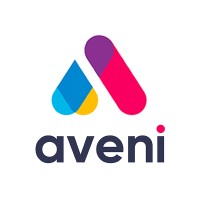
By Gloria Methri
Today
- To come
- Aveni Assistance
- Aveni Detection
Artificial intelligence Financial Technology Aveni has announced one of the largest Series A investments in a Scottish company this year, amounting to £11 million. The investment is led by Puma Private Equity with participation from Par Equity, Lloyds Banking Group and Nationwide.
Aveni combines AI expertise with extensive financial services experience to create large language models (LLMs) and AI products designed specifically for the financial services industry. It is trusted by some of the UK’s leading financial services firms. It has seen significant business growth over the past two years through its conformity and productivity solutions, Aveni Detect and Aveni Assist.
This investment will enable Aveni to build on the success of its existing products, further consolidate its presence in the sector and introduce advanced technologies through FinLLM, a large-scale language model specifically for financial services.
FinLLM is being developed in partnership with new investors Lloyds Banking Group and Nationwide. It is a large, industry-aligned language model that aims to set the standard for transparent, responsible and ethical adoption of generative AI in UK financial services.
Following the investment, the team developing the FinLLM will be based at the Edinburgh Futures Institute, in a state-of-the-art facility.
Joseph Twigg, CEO of Aveniexplained, “The financial services industry doesn’t need AI models that can quote Shakespeare; it needs AI models that deliver transparency, trust, and most importantly, fairness. The way to achieve this is to develop small, highly tuned language models, trained on financial services data, and reviewed by financial services experts for specific financial services use cases. Generative AI is the most significant technological evolution of our generation, and we are in the early stages of adoption. This represents a significant opportunity for Aveni and our partners. The goal with FinLLM is to set a new standard for the controlled, responsible, and ethical adoption of generative AI, outperforming all other generic models in our select financial services use cases.”
Previous Article
Network International and Biz2X Sign Partnership for SME Financing
IBSi Daily News Analysis

SMBs Leverage Cloud to Gain Competitive Advantage, Study Shows
IBSi FinTech Magazine
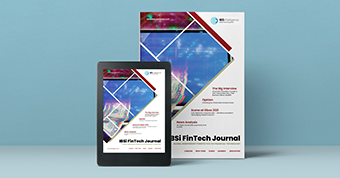
- The Most Trusted FinTech Magazine Since 1991
- Digital monthly issue
- Over 60 pages of research, analysis, interviews, opinions and rankings
- Global coverage
subscribe now
-

 DeFi12 months ago
DeFi12 months agoDeFi Technologies Appoints Andrew Forson to Board of Directors
-

 Fintech12 months ago
Fintech12 months agoUS Agencies Request Information on Bank-Fintech Dealings
-

 News1 year ago
News1 year agoBlock Investors Need More to Assess Crypto Unit’s Earnings Potential, Analysts Say — TradingView News
-

 DeFi12 months ago
DeFi12 months agoSwitchboard Revolutionizes DeFi with New Oracle Aggregator
-

 DeFi12 months ago
DeFi12 months agoIs Zypto Wallet a Reliable Choice for DeFi Users?
-

 News1 year ago
News1 year agoBitcoin and Technology Correlation Collapses Due to Excess Supply
-

 Fintech12 months ago
Fintech12 months agoWhat changes in financial regulation have impacted the development of financial technology?
-

 Fintech12 months ago
Fintech12 months agoScottish financial technology firm Aveni secures £11m to expand AI offering
-
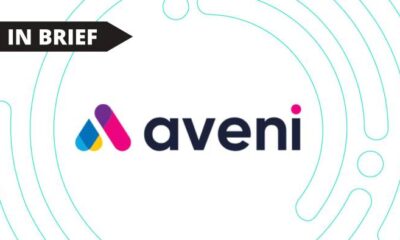
 Fintech12 months ago
Fintech12 months agoScottish financial technology firm Aveni raises £11m to develop custom AI model for financial services
-
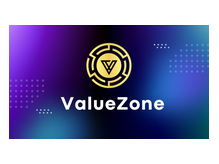
 News1 year ago
News1 year agoValueZone launches new tools to maximize earnings during the ongoing crypto summer
-

 DeFi1 year ago
DeFi1 year agoTON Network Surpasses $200M TVL, Boosted by Open League and DeFi Growth ⋆ ZyCrypto
-

 Videos6 months ago
Videos6 months ago“Artificial intelligence is bringing us to a future that we may not survive” – Sco to Whitney Webb’s Waorting!






